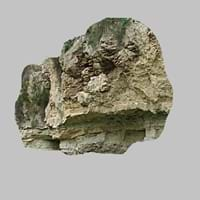Definition
A water-soluble mineral sediment resulting from concentration and crystallization by evaporation from an aqueous solution
Slate is a fine-grained, foliated, homogeneous metamorphic rock derived from an original shale-type sedimentary rock composed of clay or volcanic ash through low-grade regional metamorphism
Discoverer
Usiglio
Unknown
Etymology
From a sediment left after the evaporation
From Old French esclate, from esclat (French éclat)
Class
Sedimentary Rocks
Metamorphic Rocks
Sub-Class
Durable Rock, Soft Rock
Durable Rock, Medium Hardness Rock
Group
Not Applicable
Not Applicable
Other Categories
Coarse Grained Rock, Fine Grained Rock, Medium Grained Rock, Opaque Rock
Fine Grained Rock, Opaque Rock
Color
Colourless, Green, Grey, Silver, White
Black, Brown, Buff, Green, Light to Dark Grey, Purple, Red, Shades of Blue
Durability
Durable
Durable
Appearance
Glassy, Vesicular and Foilated
Dull
Interior Uses
Decorative Aggregates, Entryways, Flooring, Homes, Interior Decoration
Bathrooms, Decorative Aggregates, Entryways, Floor Tiles, Flooring, Homes, Hotels, Interior Decoration, Kitchens, Stair Treads
Exterior Uses
As Building Stone, As Facing Stone, Garden Decoration, Paving Stone
As Building Stone, As Facing Stone, Garden Decoration, Paving Stone
Other Architectural Uses
Curbing
Curbing
Construction Industry
As a Flux in the Production of Steel and Pig Iron, As a Sintering Agent in Steel Industry to process Iron Ore, As Dimension Stone, Cement Manufacture, for Road Aggregate, Making natural cement, Manufacture of Magnesium and Dolomite Refractories
As Dimension Stone
Medical Industry
Taken as a Supplement for Calcium or Magnesium
Not Yet Used
Antiquity Uses
Artifacts
Artifacts, Monuments, Sculpture, Small Figurines
Commercial Uses
Used in the manufacture of Ceramic Powder, Used in the preparation of Sulfuric Acid and Silicon Diborite
Blackboards, Commemorative Tablets, Laboratory bench tops, Standard material for the bed of Billiard table, Standard material for the beds of Pool and Snooker table, Tombstones, Used in aquariums, Writing Slates
Types
Not Available
Not Available
Features
Generally rough to touch, Splintery, Veined
Easily splits into thin plates, Surfaces are often shiny, Very fine grained rock
Archaeological Significance
Monuments
Not Yet Used
Used
Famous Monuments
Not Applicable
Data Not Available
Sculpture
Not Yet Used
Used
Famous Sculptures
Not Applicable
Data Not Available
Figurines
Not Yet Used
Used
Formation
Evaporite is water-soluble mineral sediment which forms from concentration and crystallization by evaporation from an aqueous solution.
Slate is a low grade metamorphic rock that is generally formed by metamorphosis of mudstone or shale, under relatively low pressure and temperature conditions.
Mineral Content
Calcite, Cancrinite, Gypsum, Kyanite, Magnetite
Apatite, Biotite, Chlorite, Feldspar, Graphite, Hematite, Kaolinite, Magnetite, Pyrite, Tourmaline, Zircon
Compound Content
CaMg(CO3)2, CaO, Calcium Sulfate, KCl, MgO, NaCl
Aluminium Oxide, CaO, Iron(III) Oxide, Potassium Oxide, MgO, Sodium Oxide, Silicon Dioxide, Titanium Dioxide
Types of Metamorphism
Burial Metamorphism, Cataclastic Metamorphism, Contact Metamorphism, Impact Metamorphism, Regional Metamorphism
Burial Metamorphism, Cataclastic Metamorphism, Regional Metamorphism
Types of Weathering
Not Applicable
Biological Weathering, Chemical Weathering, Mechanical Weathering
Types of Erosion
Not Applicable
Coastal Erosion, Glacier Erosion, Water Erosion, Wind Erosion
Grain Size
Medium to Fine Coarse Grained
Very fine-grained
Fracture
Conchoidal
Splintery
Streak
White
Light to dark brown
Porosity
Less Porous
Less Porous
Luster
Subvitreous to Dull
Dull
Toughness
Not Available
1.2
Specific Gravity
2.86-2.99
2.65-2.8
Transparency
Translucent
Opaque
Density
2.8-2.9 g/cm3
2.6-2.8 g/cm3
Resistance
Heat Resistant, Pressure Resistant
Heat Resistant, Impact Resistant, Pressure Resistant, Wear Resistant
Deposits in Eastern Continents
Asia
Not Available
China, India, Turkey
Africa
Not Available
Not Yet Found
Europe
United Kingdom
Belgium, France, Germany, Italy, Norway, Portugal, Spain, United Kingdom
Others
Not Yet Found
Arctic
Deposits in Western Continents
South America
Colombia, Paraguay
Brazil
Deposits in Oceania Continent
Australia
Central Australia, Western Australia
Not Yet Found
All about Evaporite and Slate Properties
Know all about Evaporite and Slate properties here. All properties of rocks are important as they define the type of rock and its application. Evaporite belongs to Sedimentary Rocks while Slate belongs to Metamorphic Rocks.Texture of Evaporite is Earthy whereas that of Slate is Foliated. Evaporite appears Glassy, Vesicular and Foilated and Slate appears Dull. The luster of Evaporite is subvitreous to dull while that of Slate is dull. Evaporite is available in colourless, green, grey, silver, white colors whereas Slate is available in black, brown, buff, green, light to dark grey, purple, red, shades of blue colors. The commercial uses of Evaporite are used in the manufacture of ceramic powder, used in the preparation of sulfuric acid and silicon diborite and that of Slate are blackboards, commemorative tablets, laboratory bench tops, standard material for the bed of billiard table, standard material for the beds of pool and snooker table, tombstones, used in aquariums, writing slates.









